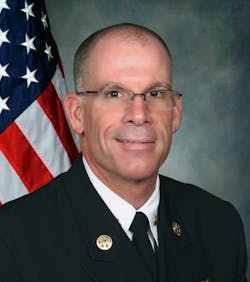40th Anniversary: Then & Now—40 Years
It was 1972 when a young firefighter from the New York City Fire Department chronicled his experiences as a firefighter serving in the South Bronx in the national best seller Report from Engine Co. 82. With his captivating writing style and descriptive detail of the “war years,” Dennis Smith painted an unparalleled picture of what it was like to work in one of the world’s busiest firehouses. His words and the stories he shared without question inspired hundreds, if not thousands, to pursue the ultimate dream—the dream of becoming a big city firefighter.
Four years later, in September 1976, Dennis founded Firehouse Magazine and created a new medium for firefighters to share their stories, read about major fires and become connected with the latest training, tools, tactics and technologies being used and applied by firefighters throughout the country.
This year marks the 40th anniversary of Firehouse Magazine and our proud tradition of serving America’s Bravest. As we look back through the archives of our first 40 years, it doesn’t take long to realize that the topical issues of the past closely resemble those in which we are actively engaged in today.
It is undoubtedly true that much has changed, but it is also true that much has stayed the same. In fact, likely the most recognizable changes are not the issues but rather the advancement in technologies and their applications, the individual interpretations, and the names and faces of the participants leading the charge.
In 1976, the most notable exception to modern times were the historically large fires and the unprecedented number of arsonists who were running amuck in many of our nation’s most populated cities. Like recent history, staffing levels were continuously under attack due to the economical shortcomings and the quest for increased political involvement and positive public relations amongst firefighters were common themes. Chemical smoke exposure (as it was termed then) was becoming increasingly troublesome among firefighters with the advent of synthetic fuels. The recommended solution: Wear your SCBA during overhaul. EMS—while still being resisted in some parts of the country—was coming of age, thanks to the characters Johnny Gage and Roy DeSoto on the overwhelmingly popular TV series Emergency!
Modern technologies featured the “Probeye,” which was being introduced by Hughes Industrial Products as the modern day thermal imager, and without the technology of LED lighting, rotary and strobes were the two most prominent choices for emergency warning lights.
The great debates of the time were centered on the safety of the traditional fire helmet, the effectiveness of chemical additives to water (aka rapid water) and how it might affect fire department staffing levels, and the visual effectiveness of lime yellow fire apparatus.
In the area of fire science, the venerable “fire triangle” as it was described was no longer a triangle but rather a tetrahedron. Halon was still in its experimental stages. Absent the environmental restrictions of the modern era, it was being projected to be one of the most efficient methods of extinguishment. And not unlike today, there was much debate about the accuracy of laboratory testing and its ability to replicate real-life events, as the NFPA, UL and the National Bureau of Standards worked intently to classify modern synthetic materials, composites and laminated components.
Not surprisingly, there was also an intense focus on cardiovascular disease amongst firefighters. In fact, in 1976, heart disease was the nation’s number one cause of death, and the American Heart Association had estimated that 52 percent of all deaths were the result of cardiovascular disease. While the national percentage was leveling off for the general population, the percentage among firefighters was continuing to increase. Interestingly enough, despite 40 years of advancements and technology and millions of dollars of cardiovascular research, the preventative recommendations are eerily similar to what we promote today: proper diet, a careful exercise program and, most important of all, firefighter awareness.
As we celebrate the path that has been paved in our first 40 years, I challenge each of you to look back at what’s been shared and take away the critical lessons that will pave the way for our future. As today’s fire service leaders, there is no greater predictor of the future than history itself. The greatest opportunity for progress is not to relive our past, but rather to learn from it, share it and seek solutions that will allow us to grow and develop the generations that will soon follow.
